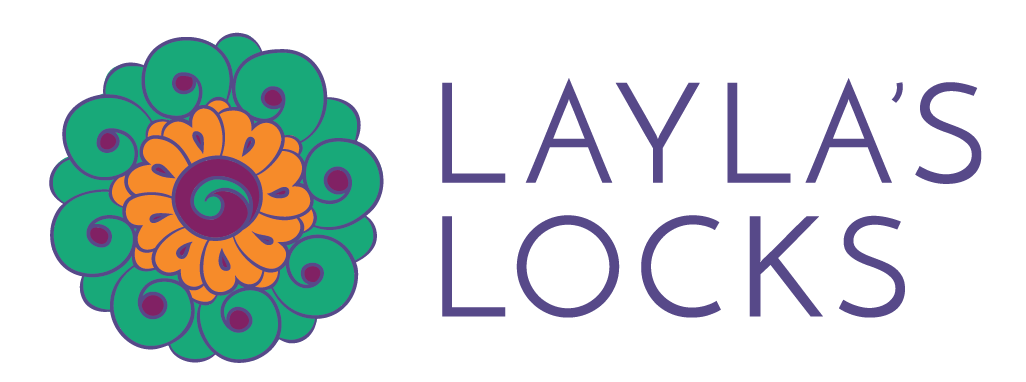More for Mature Locs
Palm Rolling – Palm rolling back and forth (never just in one direction or a weak spot can be created) will assist in the shaping and maturing of your locs.
Clockwise Root Rubbing – This will be an ongoing task that will help to create new knots at the roots of your locks. Pinching the loc tightly with about 1/4 to 1/2 inch of regrowth, rub against the scalp in a clockwise direction. About 85% of growth and curl patterns found in human hair turn clockwise, so working in this direction takes advantage of the hair’s natural “grain.” Knot formation is easiest when locs are very clean so right after washing and fully drying is the best time to try this. Once you have rubbed the root for about 30 seconds, you will get a poof of knots. Once you have formed that poof, roll it into a shape that matches the rest of the dread to compress that knot and encourage the cylindrical formation of the loc. I also recommend Dollylocks dry shampoo locking powder to enhance your results, and get some scalp stimulation from the Tea Tree and Spearmint contained in the powder.
Loose Hair Fixes – Loose hairs happen. Its part of the natural growth process of our hair and has a couple fixes. 1) Crochet hooks are useful for weaving a few loose hairs back into the body of the dread. 2) loc balling can be employed for larger chunks of hair and involves rolling loose hairs into a small ball of knots and then tucking that ball into the roots of the nearest adjacent loc.
Scheduled routine maintenance – Locs are like any other hairstyle that you would get at a salon: in order for it to look its best, I highly recommend you schedule a 3 – 4 maintenance appointments in your first year of locks. After that point, you decide when its right, but most clients see me 2-4 times per year.
And don’t just take my word for it… Here’s lots of info on starting and maintaining locs
